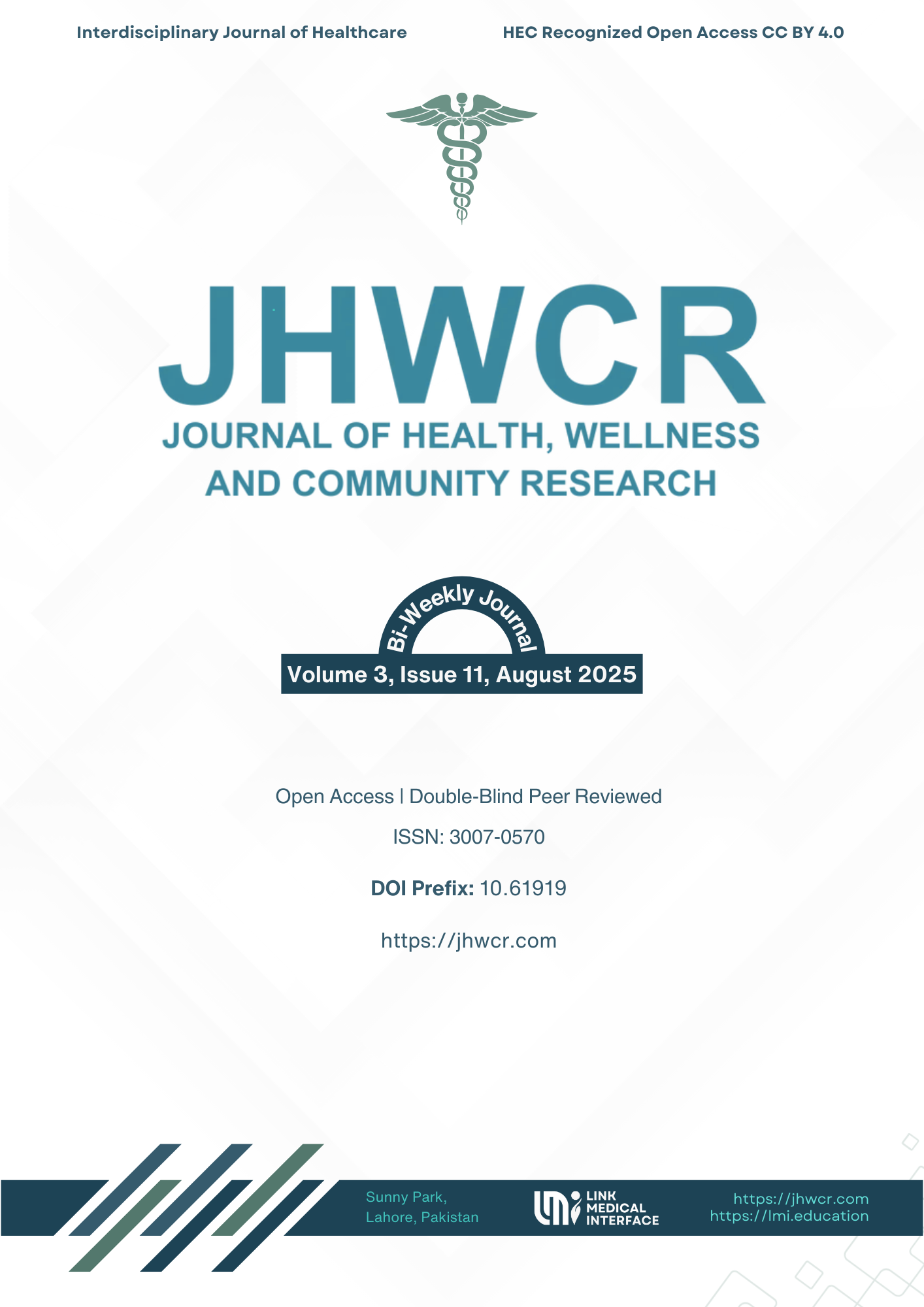Association of Gender with Depth of Impacted Third Molars and Associated Pathologies in Right Versus Left Mandible
DOI:
https://doi.org/10.61919/6d632n65Keywords:
Mandibular third molars, impaction, orthopantomography, gender differences, radiographic pathology, Pell and Gregory classificationAbstract
Background: Impacted mandibular third molars are among the most frequently encountered dental anomalies and are associated with variable prevalence patterns and pathologies across populations. Orthopantomography (OPG) remains a primary diagnostic tool for their evaluation, and gender-based differences in impaction depth and related pathologies are inconsistently reported in the literature. Objective: To determine the association of gender with the depth and radiographic pathologies of impacted mandibular third molars in a Pakistani population using standardized radiographic assessment. Methods: This cross-sectional study analyzed 383 orthopantomographs comprising 605 impacted mandibular third molars (299 right, 306 left) collected between March 2024 and April 2025 at Sharif Medical & Dental College, Lahore. Depth of impaction was categorized using the Pell and Gregory classification, while periapical radiolucency, pericoronal radiolucency, dental caries, and external root resorption were assessed by two calibrated examiners with adjudication for discrepancies. Associations with gender were evaluated using Chi-square or Fisher’s exact tests with effect sizes (Cramer’s V, odds ratios) and 95% confidence intervals, with exploratory age-stratified analyses. Results: The mean age of patients was 31.7±8.3 years (males 32.1±8.6; females 31.2±7.9). Class A, B, and C impactions accounted for 264/605 (43.6%, 95% CI 39.6–47.6), 228/605 (37.7%, 95% CI 34.0–41.6), and 113/605 (18.7%, 95% CI 15.8–21.9), respectively. Periapical radiolucency was present in 538/605 (88.9%, 95% CI 86.3–91.0), pericoronal radiolucency in 580/605 (95.9%, 94.0–97.2), dental caries in 17/605 (2.8%, 1.7–4.5), and external resorption in 2/605 (0.3%, 0.1–1.2). Gender differences were not statistically significant for depth (Right: V=0.055, p=0.63; Left: V=0.116, p=0.13) or any pathology (ORs 0.89–1.15, all p>0.05). Age-stratified analysis suggested slightly higher prevalence of caries and Class C impactions in patients >35 years, but trends were non-significant (p>0.10). Conclusion: Gender was not significantly associated with the depth or radiographic pathologies of impacted mandibular third molars. Observed differences across sides and genders were descriptive, while age appeared to influence severity trends without reaching statistical significance. Larger multicenter, age-stratified studies using 3D imaging are warranted to refine population-specific risk profiles.
Downloads
Published
Issue
Section
License
Copyright (c) 2025 Laiba Ghazanfar, Muhammad Abdullah, Hafiz Muhammad Qaseem Amir, Zaffar Rashid, Sameen Zohra, Javeria Lateef, Hira Butt (Author)

This work is licensed under a Creative Commons Attribution 4.0 International License.


